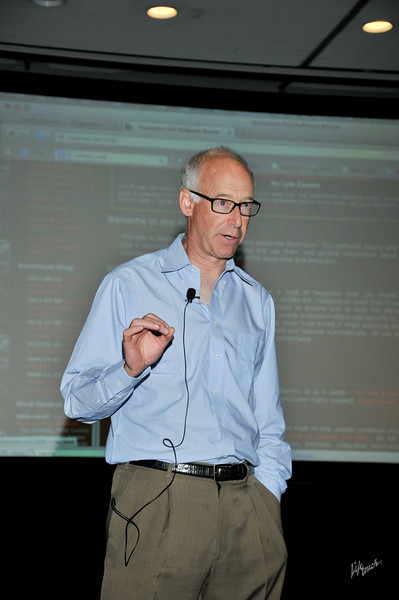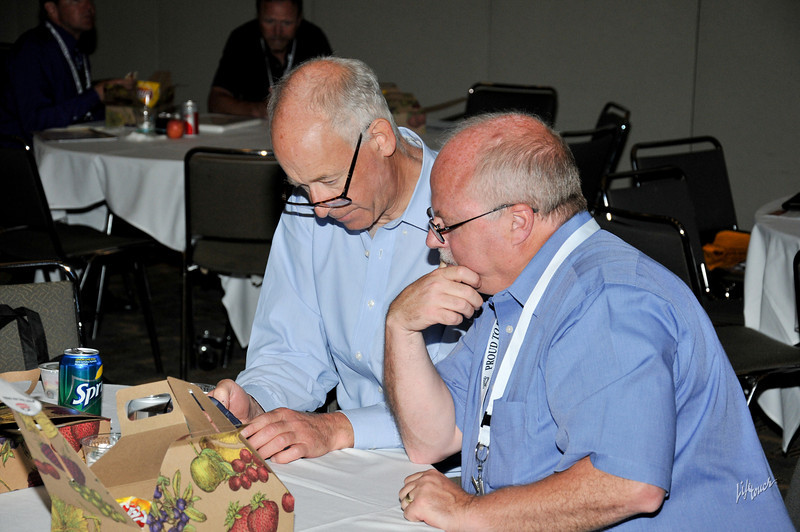Technology and the Common Core: Must-Hear Tips from Alan November
Conference News Online – 2013 By Peter Carpenter
By Peter Carpenter
 It’s easy to get lost in all the talk surrounding the impending Common Core standards. But in his NAESP 2013 Annual Conference session, “Figuring Out the Pieces of the Common Core,” Alan November guided principals on a Common Core learning adventure.
It’s easy to get lost in all the talk surrounding the impending Common Core standards. But in his NAESP 2013 Annual Conference session, “Figuring Out the Pieces of the Common Core,” Alan November guided principals on a Common Core learning adventure.
It wasn’t a journey for the faint of heart—by the end of the session, I think attendees’ minds were blown. Case in point: my final Tweet of the session was: “#naesp13 Alan November just shared the WolframAlpha knowledge engine. O-M-blows Google out of the water!”
November, an author and education technology guru, contends that teaching tech skills and integrating technology as a tool are critical to student success. What’s important for us to keep in mind, he said, is that what the Common Core requires of our students is application of knowledge. Technology can very easily be used to help students acquire rote skills. It is the teacher’s role to help students take those skills and apply them in a real-world context.
 November shared that teaching these technology skills cannot be done too soon: the earlier, the better. Our job as school leaders is to remove obstacles from teachers’ paths so that they can help students acquire the tools for success. He shared several ways to do so:
November shared that teaching these technology skills cannot be done too soon: the earlier, the better. Our job as school leaders is to remove obstacles from teachers’ paths so that they can help students acquire the tools for success. He shared several ways to do so:
- Redefine classroom jobs for students. In addition to room helpers, students can be assigned to be photographers, video technicians, and Tweeters. Students capture learning as it’s happening through digital media, and upload it on a daily and weekly basis to leave a “legacy of learning.” These uploads give purpose to student work and chronicle their learning in very meaningful ways.
- Redesign assessment to be about learning, not punishment. So often when it comes to assessments, students are punished for getting answers wrong. November contends that the number one way for students to learn is to get timely, immediate feedback from knowledgeable others, including peers. Citing the work of Harvard physics professor Eric Mazur, November shared a simple shift for a learning assessment: 20/20/20. Students spend 20 minutes taking the test independently. Students then spend 20 minutes in groups of five sharing their answers and clarifying/debating the responses to their answers, and they get two chances to correct any misconceptions. Then, students work as a group once more for 20 minutes to create an authentic problem for the content that was missed. It’s a novel approach to making assessments a learning opportunity for all!
- Keep technology integration ongoing. November helped attendees see that our chief goal as leaders is to help teachers relinquish control with students and technology. He even encouraged us to bring students to professional development sessions with teachers and let the kids learn, too.
It wouldn’t be an Alan November session without tech tips! He shared with attendees valuable search tips that can help teachers improve productivity, as well as acquire content-specific information. Citing websites such as Khan Academy, Mathtrai, Mathletics, and Wolfram-Alpha, he modeled how to implement content across curricula.
November’s session was a must-hear for principals and teachers alike. I can’t wait to share these big ideas with my staff. Find more information from November from his website or follow him on Twitter @globalearner.
Peter Carpenter is principal of Emmorton Elementary School in Bel Air, Maryland.
EdWeek reporter Benjamin Herold attended November’s session and reported on the intersections between the Common Core and technology. Read his story here.
Photos courtesy of Lifetouch.
Copyright © 2013 National Association of Elementary School Principals. No part of the articles in NAESP magazines, newsletters, or website may be reproduced in any medium without the permission of the National Association of Elementary School Principals. For more information, view NAESP’s reprint policy.

